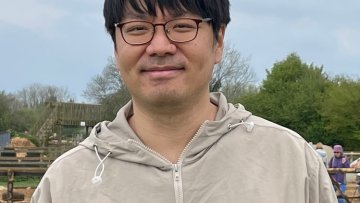A theorem of Chatzidakis, van den Dries and Macintyre, stemming ultimately from the Lang-Weil estimates, asserts, roughly, that if $\phi(x,y)$ is a formula in the language of rings (where $x,y$ are tuples) then the size of the solution set of $\phi(x,a)$ in any finite field $F_q $(where $a$ is a parameter tuple from $F_q$) takes one of finitely many dimension-measure pairs as $F_q$ and $a$ vary: for a finite set $E$ of pairs $(\mu,d)$ ($\mu$ rational, $d$ integer) dependent on $\phi$, any set $\phi(F_q,a)$ has size roughly $\mu q^d$ for some $(\mu,d) \in E$.
This led in work of Elwes, Steinhorn and myself to the notion of 'asymptotic class’ of finite structures (a class satisfying essentially the conclusion of Chatzidakis-van den Dries-Macintyre). As an example, by a theorem of Ryten, any family of finite simple groups of fixed Lie type forms an asymptotic class. There is a corresponding notion for infinite structures of 'measurable structure’ (e.g. a pseudofinite field, by the Chatzidakis-van den Dries-Macintyre theorem, or certain pseudofinite difference fields).
I will discuss a body of work with Sylvy Anscombe, Charles Steinhorn and Daniel Wolf which generalises this, incorporating a richer range of examples with fewer model-theoretic constraints; for example, the corresponding infinite 'generalised measurable’ structures, for which the definable sets are assigned values in some ordered semiring, need no longer have simple theory. I will also discuss a variant in which sizes of definable sets in finite structures are given exactly rather than asymptotically.


